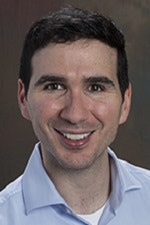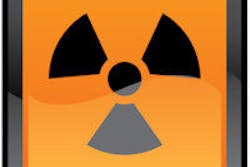
Nearly half of emergency medicine providers weren't able to identify which of six commonly used imaging modalities involved ionizing radiation, according to survey results published in the September edition of the Journal of the American College of Radiology. The researchers also found other surprising gaps in radiation awareness -- but radiologists can help.
"We found that the subset of providers who had a good radiation safety knowledge base and who were comfortable discussing radiation with patients -- including pregnant women -- was pretty small," corresponding author Dr. Tarek Hanna from Emory University told AuntMinnie.com. "It shows us the extent of the knowledge gaps."
What do ED providers know?
Imaging use in the emergency department (ED) is already common, and utilization rates continue to rise, especially for advanced tests such as CT. But prior studies have shown gaps in what emergency physicians know about ionizing radiation and its effects on patients, finding that a majority of ED doctors underestimate radiation doses for common imaging studies, according to Hanna and colleagues.
 Dr. Tarek Hanna of Emory University.
Dr. Tarek Hanna of Emory University.This study is the first to document comparative radiation knowledge rates among a range of ED providers, including nurse practitioners and physician assistants -- on whom hospitals are increasingly relying as the demand for emergency care intensifies, the group wrote (JACR, September 2016, Vol. 13:9, pp. 1044-1049).
Patient care is as stake, according to Hanna and colleagues.
"The knowledge gap among ED providers regarding radiation safety, exposure, and dose may affect ED patient care," they wrote.
The researchers distributed an electronic questionnaire to ED providers in a five-hospital, university-affiliated healthcare system. These providers included emergency medicine physicians, emergency medicine residents, and what Hanna's group called "midlevel providers," that is, nurse practitioners and physician assistants. The researchers received 106 responses out of 210 surveys sent, for a response rate of about 50%. Of those who responded, 41 were attending physicians, 32 were residents, and 31 were nurse practitioners or physician assistants.
The survey questions addressed the following:
- Which radiology exams use ionizing radiation
- How comfortable the provider would be explaining the risks of radiation exposure or the amount of radiation in a given test to patients (extremely, somewhat, or not very comfortable; uncomfortable; or extremely uncomfortable)
- How providers would rank tests in decreasing order of radiation dose
- The effects of radiation on different patient age groups
- What the phrase "deterministic effects of radiation" means
- What the risks of an unintentional CT of the abdomen and pelvis might be for a woman who is 10 weeks pregnant
The researchers found that 44.6% of survey respondents could not identify which of six common imaging modalities used ionizing radiation. Nurse practitioners and physician assistants were more likely to incorrectly identify radiography (25%) and fluoroscopy (29%) as modalities that do not use radiation (although the number who misidentified fluoroscopy was not statistically significant). These midlevel providers were also more likely to incorrectly rank a selection of imaging tests by radiation exposure and incorrectly answer questions about the effects of radiation on patients.
Attending physicians were less comfortable than residents in explaining the risks of radiation to patients, at 14.6% compared with 37.5%. Almost half of attending physicians (47.5%) and nearly three-quarters of residents (71.9%) said they were not very comfortable, uncomfortable, or extremely uncomfortable explaining to patients the amount of radiation in particular imaging tests.
"Midlevel providers were more likely to make factual errors, while emergency medicine residents were least comfortable counseling patients about radiation risks," the group wrote.
Rads to the rescue
Radiologists can offer key support to emergency medicine providers, the authors suggested, perhaps by developing educational modules for use in training programs for both residents and midlevel providers. Radiation education could be integrated into all stages of medical training -- from preclinical lectures to continuing education for attending physicians -- and could also take the form of credentialing programs or on-the-job training.
In fact, Hanna's group is working on a second phase of research that will assess the effectiveness of interventions such as a slide presentation, a two-page "cheat sheet" about commonly used tests and how much radiation they impart, and a pocket card that lists tests and doses that emergency medicine residents can carry with them.
"We've got some radiologists working with emergency medicine attendings and residents to offer support in these ways," Hanna said. "We're also emphasizing that we're available for consult with our colleagues and, if needed, also with patients."





















